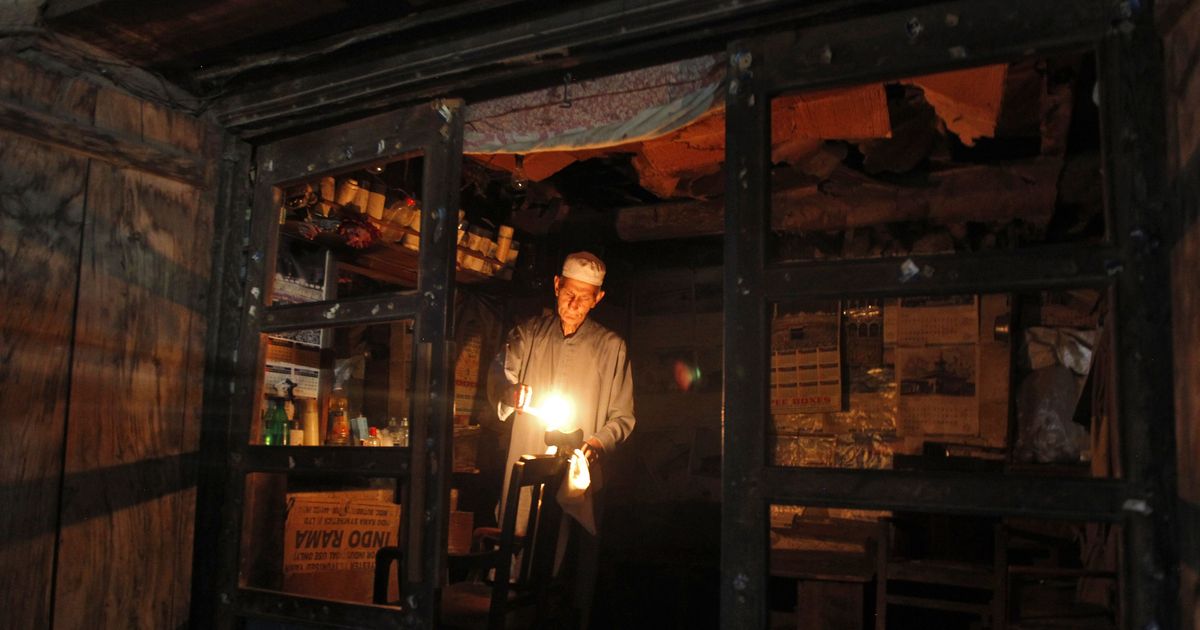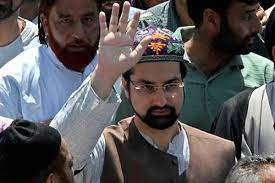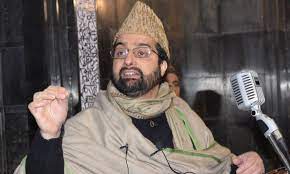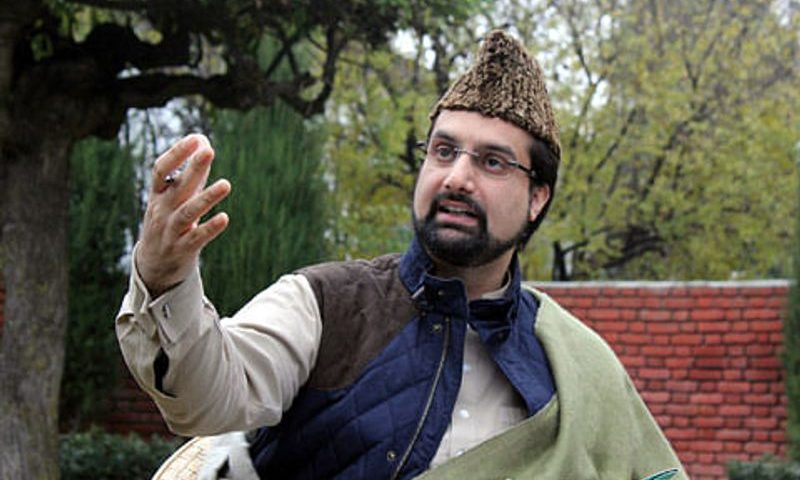Many believe that electricity supply to the Valley gets diverted to Jammu when the political capital moves there during the cold months. But it’s more complex.
Every October, the Jammu and Kashmir administration shuts its offices in the summer capital of Srinagar to move to the winter capital of Jammu, a process anachronistically referred to as “the durbar move”. As political power moves south, in the Valley, electricity cuts inevitably grow longer.
On October 28, the Power Development Department, which is responsible transmission and distribution of electric power in the state, announced a load shedding schedule for the Valley: metered areas of the Valley would face at least 21 hours of outages a week, it said, while non-metered areas would see up to 42 hours of cuts.
The fact that the power shortages coincide with the durbar move has led to speculation that the electricity is being diverted to the Jammu region, where it is required by the administration requires. But officials of the Valley’s Power Development Department say there is little truth to this. Kashmir’s power shortages stem from a host of other factors, they say, including inadequate infrastructure, transmission losses and under-utilisation of resources.
Since most of Kashmir’s large power projects are under the management of the National Hydroelectric Power Corporation, the outages at this time of the year reinforce an old grievance – that the Valley does not have control over its resources. The 21 state-owned projects have the capacity to generate 1,211.96 megawatts of power, while seven Central projects have capacity for 2,009 megawatts.
High demand
Shehnaz Goni, the department’s chief engineer, said that the suggestion of power being diverted is a myth: a simple equation of demand and supply explained the Valley’s power cuts. “Our transmission lines and system installed in the Valley can only supply a total capacity of 1,200 megawatts whereas the demand during winter seasons is between 1,600-1,800 megawatts,” she said.
The Valley lacks heavy industries and with most of the bureaucracy shifted to Jammu, bureaucratic work comes to a standstill during the winters. But demand for electricity soars as the use of heating appliances used to ward off the bitter cold increases.
Jammu and Kashmir, according to the state’s economic surveys, is perpetually energy deficient and has to rely on power purchases from Northern Grid to meet its requirements. This is particularly true of the winter season, when demand goes up and generation goes down.
The Eighteenth All India Power Survey projected that the power demands of Jammu and Kashmir would increase from 1,706 megawatts – 9,640 million units of electricity in 2004-’05 – to 4,217 megawatts or 21,887 million units of electricity in 2021-22. According to the state’s 2016 Economic Survey Report, the state’s peak demand for power has grown by 8% from 2011-’12 to 2015-’16.
The report said that peak deficit had fallen from 28% in 2012-’13 to 23% in 2015-’16. But that must be weighed against that fact that of the 24,655 total habitations in the state, 11,006 or 45% were unelectrified, de-electrified, or partially electrified as on October 2013. As of 2016, three lakh households were yet to be electrified.
Low supply
The Valley gets most of its power from hydel power projects. With the region’s rivers at their lowest ebb in winter, the electricity generation also takes a hit. According to a report in the Kashmir Post, three power projects in North Kashmir’s Uri with a combined capacity of 795 megawatts are generating just 220 megawatts of electricity. Goni said that at present “the generation was about 25% of the capacity”. This year’s dry spell reduced the level in the state’s rivers, exacerbating the shortage.
It isn’t as if the state has tapped out its resources: about 84% of the total estimated potential from the state’s water resources has not yet been harnessed. According to consecutive state surveys, the rivers of Jammu and Kashmir have the potential to yield 20,000 megawatts of power, out of which 16,480 megawatts have been identified so far.
This seems to have been accompanied by a slow increase in output. The state’s annual economic report in 2013-’14 said only 2,693.45 megawatts of power was produced. The next year saw an increase of 1% at 2,813.46 megawatt and the subsequent year, 2015-’16, the output was 3,263.46 megawatt.
According to the state economic survey report of 2015, electricity generated by the state’s power projects “is meagre and the free power (or the amount of power granted to the state from Centrally owned projects) also accounts very little”. As a consequence, the state had to purchase 72.95% of its electricity requirements from other sources during the financial year 2013-14.
Transmission losses and low revenue
Besides the inability to utilise its potential fully, the state has not been able to minimise transmission and distribution losses as power travels across its grid from generation source to end-user. These losses occur for a variety of reasons, ranging from inefficient equipment to power theft. These losses account for 62% for 2011-’12, 57% for 2012-’13 and 53% estimated for 2013-’14.
Besides the transmission losses, the state has been unable to bridge commercial losses – or the deficit in revenue. The deficit of Rs. 275 crore in 2002-’03 grew to Rs. 2,281 crore during 2012-’13.

The economic survey of 2014 blamed the revenue deficit on “high power thefts/illegal uses/unregistered consumers, uncontrolled and unaccounted consumption of power, lesser load agreements, low tariff rates and poor collection efficiency.”
Finance Minister Haseeb Drabu pointed to the problem in his power budget speech on January 11 this year: “For, despite the tariff being one of the lowest in the country, our power collections are consistently one-third or one-fourth of what is budgeted. It is a fact that a vast majority of users don’t pay electricity bills at all or in line with their consumption.”
Revenue collection stood at only 33.21% during the first six months of the year 2016-’17 as against 40.65% during the same period in 2015-’16. The gap, officials say, was because of the unrest in the Valley during first six month of 2016-’17.
“It may sound a bit alarmist but the precarious state of affairs in respect of gap between power purchase and actual revenue realisation cannot be allowed to continue,” Drabu had said in 2015. “It is the duty of the government to ensure supply of power, but it is also the obligation of the people to pay for power.”
The accumulation of liabilities on account of power purchases, the 2016 state economic survey said, has resulted “in very high interest rate not favourable to the state exchequer”. Drabu, in his speech this year, had said that the state had accumulated Rs 8,000 crore in liabilities over the years because of the purchase of power. A part of the debt, worth Rs 3,537.55 crore, had been restructured under the Centre’s UDAY (Ujwal DISCOM Assurance Yojana) scheme, and the balance of Rs 3,500 crore would be restructured through power bonds, he said.
A political point
Central to the political rhetoric about power has been the question of who controls the state’s resources. Back in 2011, Congress leader and then power minister Taj Mohiuddin had compared the National Hydroelectric Power Corporation to the colonial-era East India Company.
According to the state survey report, the hydel projects constructed in the central sector “allow the state only 12% of energy actually generated, even in the state sector 450 MW Baglihar Hydel Project commissioned recently, the state has to sell about 50% of the energy to outside buyers as a precondition imposed by the rendering institutions leaving its own consumers striving for energy. Owing to Indus Water treaty, the state has to choose less economic designs of Hydel projects.”
The transfer of two hydropower projects to the state and a greater share in the profits made by the National Hydroelectric Power Corporation from the state’s waters is on the “Agenda of Alliance” signed between the People’s Democratic Party and the Bharatiya Janata Party. Later, Union power minister Piyush Goyal ruled out both proposals.
Iftikhar Drabu, an expert in hydro power, said the transfer of the projects in the Central sector would not serve the state well. It would lose out on revenues. Currently, the state charges consumers for water usage from these projects. “If the power projects are returned to the state, it would not be able to charge consumers for water usage since the projects are its own,” he said.
If and when the hydro power projects are returned, Jammu and Kashmir government would have to revisit the existing power purchase agreements signed between the Centre and other states drawing power from these projects, Iftikhar Drabu added. “Annulment of these agreements by the state might provoke the other states like Haryana, Delhi, Rajasthan, Himachal, Punjab and Uttarakhand to seek abrogation of the PPA [power purchase agreements] for projects which fall within these states [from which Jammu and Kashmir draw power].” This can be disastrous for Jammu and Kashmir, he said, particularly during winter when the generation from hydro power projects drops to one fifth of the summer levels.






